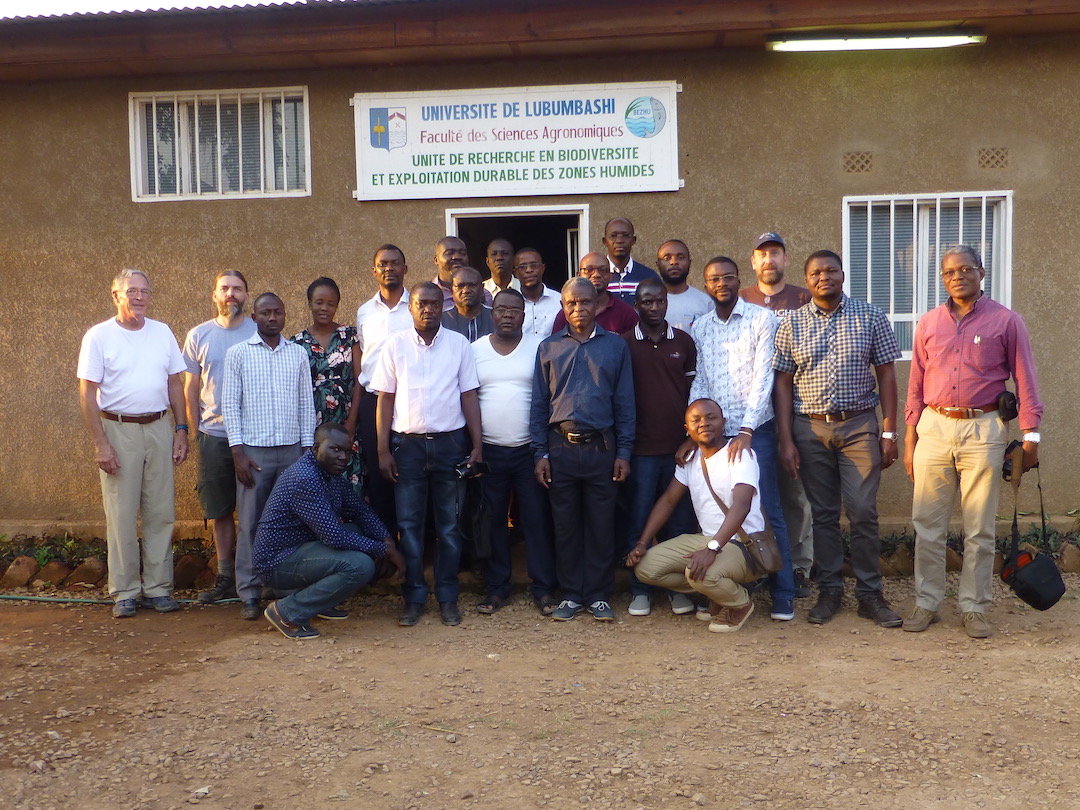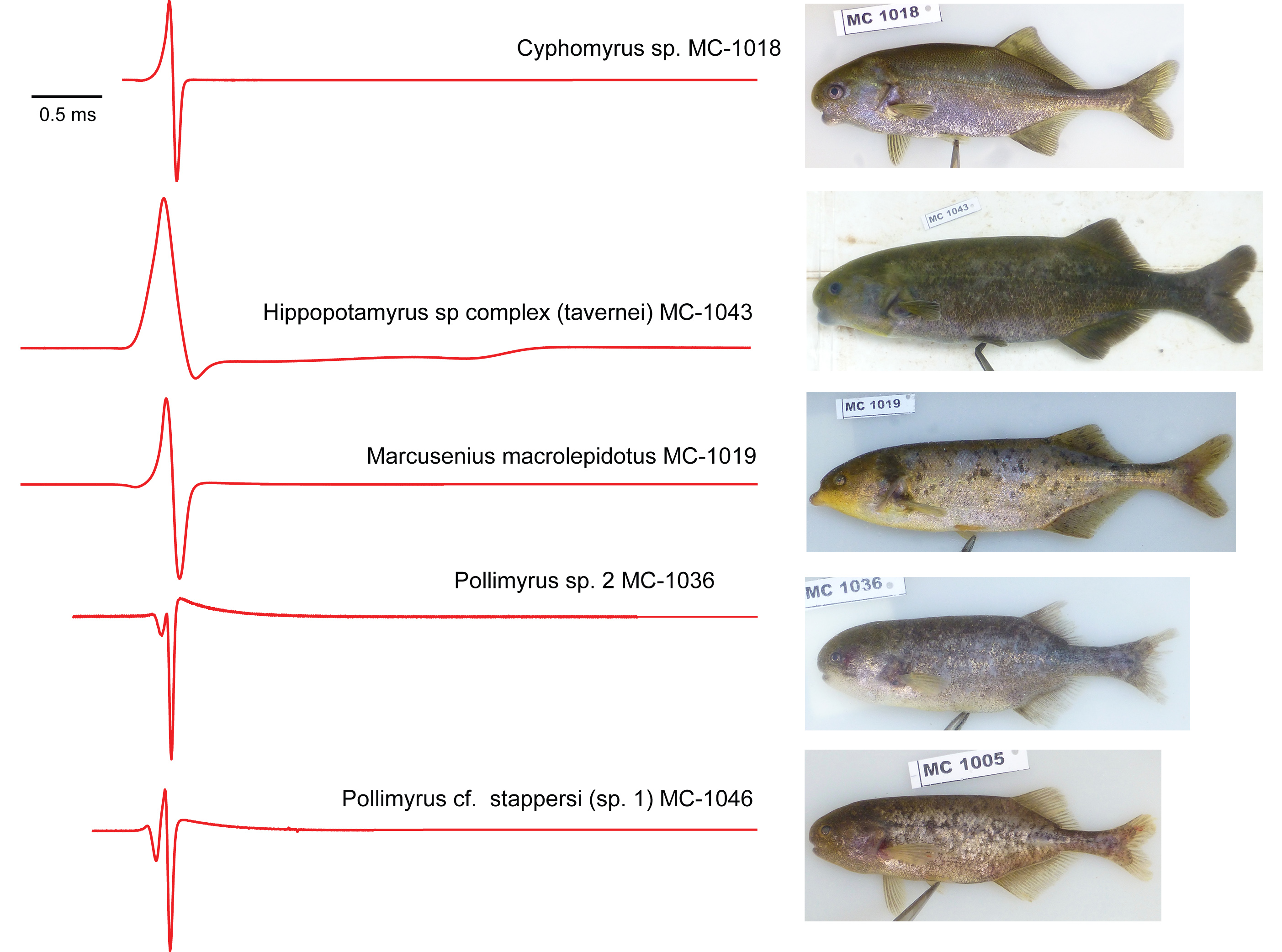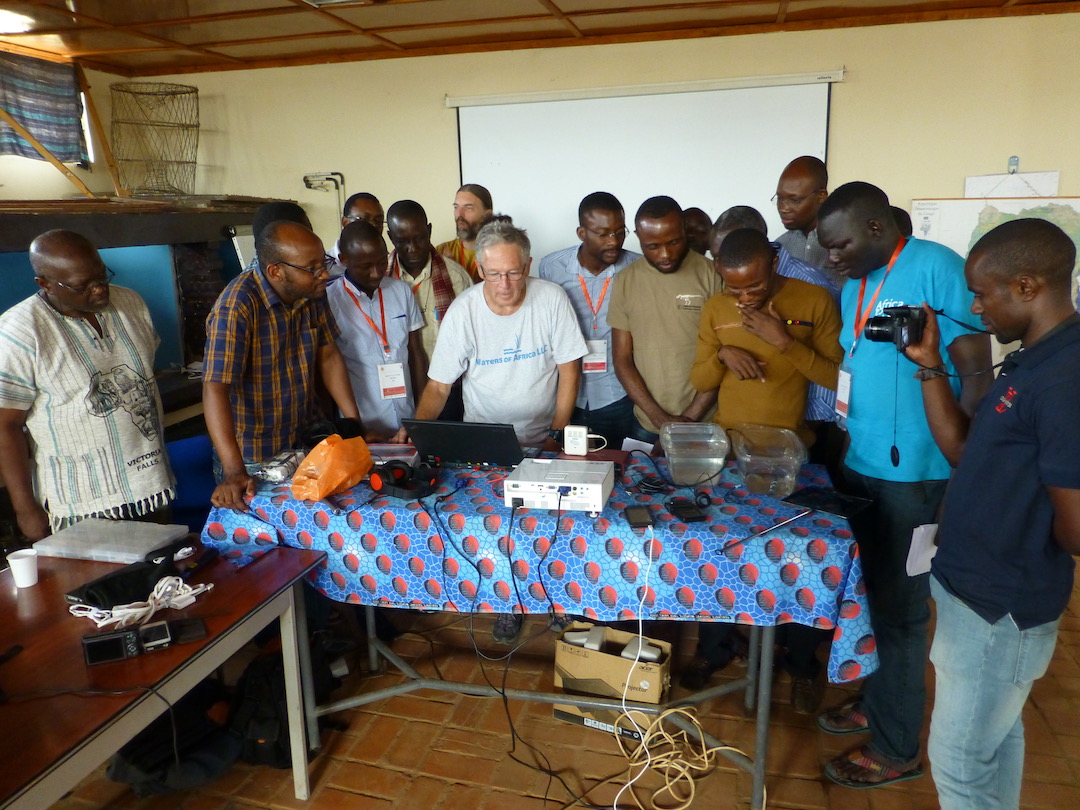Electric signals produced by Africa’s freshwater mormyrid fishes are useful to fish taxonomists seeking to discover and describe the many still undocumented species in this group. However knowledge how to record and make use of these signals has been limited to a few specialists in the U.S. and Europe until now.
From Monday October 1 to Thursday October 4, 2018 the first teaching workshop of its kind on recording electric signals of these unusual fishes was held at the University of Lubumbashi’s Faculty of Agronomic Sciences. The twenty-one participants included sixteen ichthyologists from all corners of the D.R. Congo, two from the Republic of Congo and one from Burundi, South Africa, and Belgium, respectively. Some participants were students, others were researchers, instructors or professors at their home institutions.
The workshop was taught by Americans Carl D. Hopkins and John P. Sullivan from Cornell University in Ithaca, New York. Hopkins is Professor Emeritus of Neurobiology and Behavior at Cornell University and Sullivan is a Curatorial Affiliate at the Cornell University Museum of Vertebrates. Sullivan had previously spent 10 months in Kisangani, D.R. Congo studying the fishes of the Congo River as a U.S. State Department Fulbright Research Scholar. They were invited to organize and teach the workshop by the Royal Museum for Central Africa (RMCA) in Tervuren, Belgium as part of its MbiSa Congo project which is studying the fish fauna of 10 protected areas within the Congo Basin. “MbiSa” is a portmanteau of the words for fish in the two languages widely spoken in the basin: “mbisi” in Lingala and “samaki” in Swahili.
Mormyrids, some of which are known in the aquarium trade as “elephant-snout fishes,” are found only in African freshwaters. All produce weak electric organ discharges or “EODs” from an organ near their tail. The EOD functions in both orientation and communication. Receptors in a mormyrid’s skin monitor fluctuations in the self-produced electric field around its body, helping it to find its way through its complex underwater habitat in the darkness of night and to find food items. Because the duration and shape of the pulse waveforms differ among species and are fixed from moment to moment for an individual, mormyrids are able to decipher the EODs of nearby fish to learn their identity and sex. They are also able to communicate their behavioral state through stereotyped patterns in the timing of their pulses.
“By a happy coincidence, these EODs are also very useful for those of us studying the taxonomy of these fish, since with each pulse an individual is essentially advertising what species it belongs to,” said Sullivan. “Because anatomical differences among closely related species are often subtle, making use of this extra source of data for discovering new species is really important.”
For years, Hopkins, Sullivan and a few other mormyrid specialists have been using EODs to help distinguish mormyrid species and including this information in the species descriptions they publish, but knowledge regarding how to do this has not been widespread. “It used to be that the hardware required was both expensive and often custom-built, but today widely available USB-based audio interfaces used with a laptop and an electrode in place of a microphone offer an easy and affordable way to record mormyrids,” said Sullivan. “Affordability, compact size, and reliability of these audio recorders opens the door to many new research opportunities using mormyrids,” noted Hopkins, “including both lab and field studies.”
With the hardware issue solved, there remained the issue that no simple, intuitive software existed for recording electric fish signals and associated data. Sullivan and Hopkins enlisted the help of German professor of physics and software engineer Christian Zeitnitz who customized his Windows OS-based software program “Soundcard Scope” to their specifications. This special version, renamed “Mormyroscope,” is freely available for non-commercial, scientific and educational use.
Hopkins and Sullivan say they were overwhelmed by the enthusiasm and interest of the workshop attendees.
Students at the University of Lubumbashi had collected specimens of five different mormyrid species and kept them healthy in aquaria in preparation for the workshop, allowing everyone to hit the ground running on day one. One or more of the species collected for the workshop may themselves represent new, undescribed species, and another, recorded for the first time, may “have unique electric organ properties that change how we view its evolutionary relationships to other species,” noted Hopkins.
With research teams now scattered across the Congo basin armed with the knowledge, hardware and software required to record mormyrid fishes, Hopkins and Sullivan express the hope that recorded electric signals will aid in the discovery and description of many more new species in the coming years.




